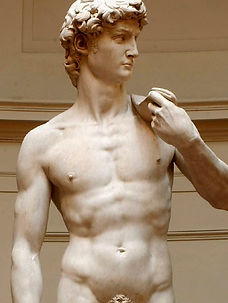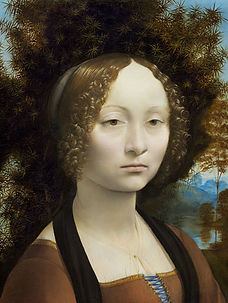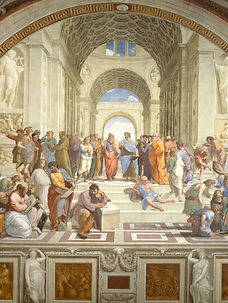

-The Renaissance Project-
THEA MELODIAS
RENAISSANCE ART
The artists of the Renaissance admired the art and writing of the Classical Age (400 B.C. -A.D. 400), The time of the Greek and Roman empires. To revive the glory and grandeur of the anceint past, these scholars eagerly studied classical literature, architecture, and sculpture.
Mona Lisa
Leonardo da Vinci
Leonarda Da Vinci's Mona Lisa is one of the most celebrated paintings in the world.
The painting, thought to be a portrait of Lisa Gherardini, the wife of Francesco del Giocondo, is in oil on a white Lombardy poplar panel, and is believed to have been painted between 1503 and 1506. Leonardo may have continued working on it as late as 1517. It was acquired by King Francis I of France and is now the property of the French Republic, on permanent display at the Louvre Museum in Paris since 1797.


David
Michelangelo di Lodovico Buonarroti Simoni
David is a masterpiece of Renaissance sculpture created between 1501 and 1504, by Michelangelo. Marble statue of a standing male nude. The statue represents the Biblical hero David, a favoured subject in the art of Florence.Because of the nature of the hero it represented, the statue soon came to symbolize the defense of civil liberties embodied in the Republic of Florence, an independent city-state threatened on all sides by more powerful rival states and by the hegemony of the Medici family. The eyes of David, with a warning glare, were turned towards Rome. The statue was moved to the Galleria dell'Accademia, Florence, in 1873, and later replaced at the original location by a replica.

Ginevra de' Benci
(1474-78), by leonardo da vinci
.Ginevra de’ Benci is a portrait painting by Leonardo da Vinci of the 15th-century Florentine aristocrat Ginevra de’ Benci. The oil-on-wood portrait was acquired by the National Gallery of Art in Washington, D.C., United States, in 1967.The Latin motto VIRTVTEM FORMA DECORAT, on the reverse of the portrait, also is understood as symbolizing her intellectual and moral virtue, while the sprig of juniper ("ginepro"), encircled by laurel and palm, suggests Ginevra's name. The laurel and palm are in the personal emblem of Bernardo Bembo, Venetian ambassador to Florence, whose platonic relationship with Ginevra is revealed in poems dedicated to them.

the school of Athens
(1510-11) by Raphael also known as Stanze di Raffaello
The School of Athens, or Scuola di Atene in Italian, is one of the most famous frescoes by the Italian Renaissance artist Raphael. It was painted between 1509 and 1511 as a part of Raphael's commission to decorate the rooms now known as the Stanze di Raffaello, in the Apostolic Palace in the Vatican. The Stanza della Segnatura was the first of the rooms to be decorated, and The School of Athens, representing Philosophy, was probably the second painting to be finished there, after La Disputa (Theology) on the opposite wall, and the Parnassus (Literature). The picture has long been seen as "Raphael's masterpiece and the perfect embodiment of the classical spirit of the Renaissance.